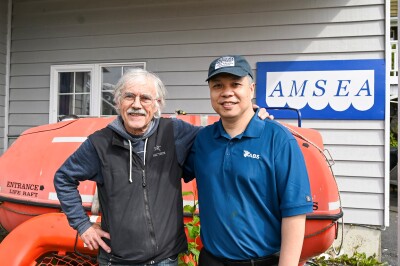In seawater tanks in a refrigerated room at the Darling Marine Center, the baby mussels are thriving.
Two months ago they were near-invisible larvae, swimming around in the tanks. Now tens of thousands of the tiny mollusks, each just a few millimeters long, have attached themselves to the different kinds of rope scientists have been testing here, and are eating the lab’s stock of algal food at an impressive clip.
Mick Devin, the lab manager at this University of Maine marine research facility, has been overseeing this experiment, part of an effort to master the art of hatching mussels, something mussel farmers – who grow their product on lines hanging in seawater – have never previously needed to do.
“Mussel farmers have been able to just throw their lines out and collect all the larvae they want from nature,” Devin says. “But mussel populations are down drastically in this state, so that may not be working so well now.” Hatcheries, he expects, may have to step up in the not-too-distant future.
Mussels have been vanishing from stretches of coastline where they once were ubiquitous, and scientists remain uncertain as to why. Green crabs, whose population exploded after an “ocean heat wave” in 2012, may have stripped many sections clean. But warmer water and increased rainfall – both problems expected to grow in Maine as a result of global climate change – may be creating a far worse problem: an acid sea.
“We know this affects larval development in bivalves, (and) chances are it will result in decreased numbers, whether it’s a natural population on a bed or one in a farm,” says Paul Rawson of the University of Maine’s School of Marine Sciences, who is in charge of the research. “We need to make sure the technology is in place so the farms will have a reliable source of seed.”
Read the full story at Portland Press Herald >>
Read more about ocean acidification >>






